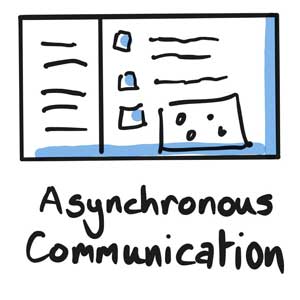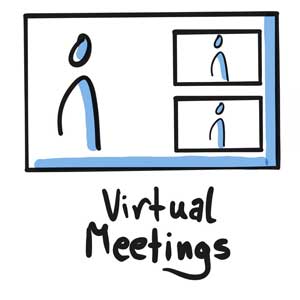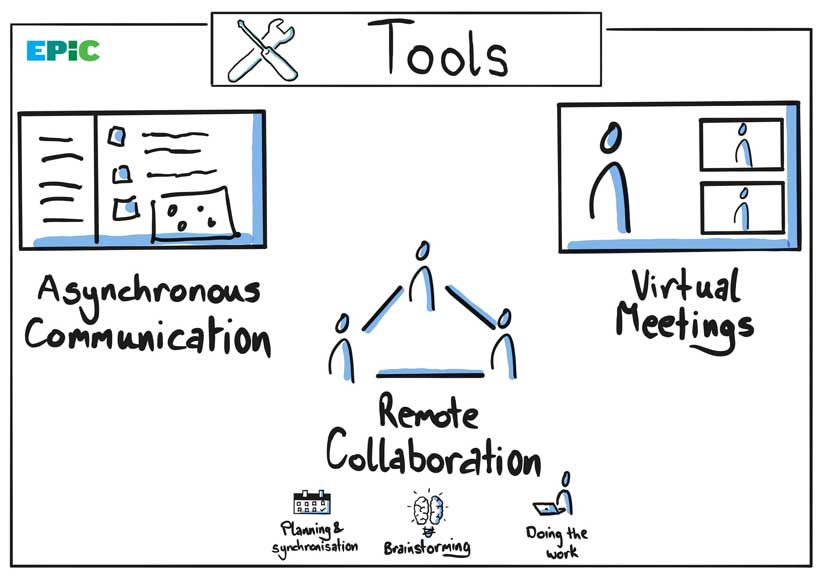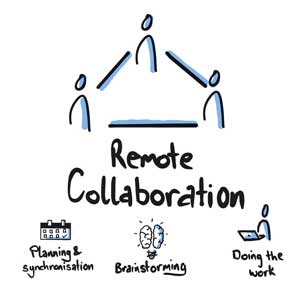 Back to Resources
Back to Resources
Tools are the backbone of any team working remotely. It is what arms your team to be able to stay connected and productive when they are unable to be physically together. Your tools are there to enable all the other layers of the Sur-Thrival Guide to take place.
For many organisations, having to move their whole business to a remote setting, is unsettling and difficult to negotiate. For this very reason, having a strategy around tooling, (just as you would around your business direction) will alleviate some of the tensions.
We would like to share three areas to consider for your tooling strategy.
Read the other layers of the Sur-Thrival Guide:

1. Asynchronous Communication
In a remote environment, functional and flexible communication is essential. Teams will require tools that encompass the ability to connect quickly and concisely at a time that suits the individual. Tooling alone though is not enough. Teams need to honour and respect that everyone will be required to work uninterrupted at times, and will engage when it suits them. This ultimately assists productivity. Tools like Slack, Google Chat, Mattermost, MS Teams and Hipchat, support short, sharp communication. Just as importantly, these tools can be used to connect personally. Office banter doesn’t have to be just for the physical office place!
Here at EPiC, Slack is the foundation of how we communicate across three different countries. This can be through an array of workgroup channels, or even one of our non-work related channels such as EPiC Parents. This is a new channel, where we have been sharing ways to homeschool or keep the kids entertained during this extradentary time in our lives. Slack also enables us to connect individually with each other.

2. Virtual Meetings
When it comes to holding a virtual meeting, there are numerous tooling options such as Zoom, Hangouts, GoToMeeting, Webex, and Video Facilitator. Essentially they all enable video conferencing. But what sets them apart are the different features and effects they offer. There would be very few people using Zoom recently that haven’t thought about taking advantage of the option to change their background. Many a beach or other more pleasurable setting than your living room has been on display of late!
What you will need to consider is, what type of meeting you are holding, and what outcome you need to take from it. The type of meetings you may hold could range from a 1:1 meeting to a department meeting, a workshop, a training session or you may even be holding a webinar. Once you understand what you need out of the meeting, it is worth spending a little time to research what each tool offers and select the most suitable to meet your needs.
At EPiC, we have a variety of virtual meeting tools on hand. We have taken the time to understand what they offer, and are comfortable with selecting the one that best compliments the type of session we are running. We have found that features like raising your virtual hand are great for knowing when someone wants to speak during a large group meeting. Additionally, having the ability to use breakout rooms has been a huge benefit when running training sessions.
3. Remote Collaboration
Collaboration is necessary at many different times and levels across teams and organisations. To help you approach this from a remote perspective, we have broken it down into three different areas.
Planning & Synchronising the work
To be able to collaborate and plan together, you need somewhere your team can access collectively. They will need to be able to add information, view, and track in real-time, as well as share with others. Tools such as Jira, Trello and Monday support this.
Brainstorming and workshopping ideas
Just as you would come together in the office around a whiteboard or use post-it notes to share ideas and come up with solutions, there are tools that allow you to do this online. Look into Miro, Jamboard and Sketchboard. There is no reason that not being physically together should stop the creative juices from flowing.
Doing the work and actually executing the work
Tools around executing the work are honestly going to differ from organisation to organisation, and from team to team. Quite simply, deciding on what type of tooling you are going to need, depends on what your area of the organisation does. Understand what your team currently uses, what else it may offer, and if it is still going to be relevant in a remote environment. If your team is finding that it is no longer supporting them to work effectively, reach out to the necessary people in your organisation to discover what is best, or do your own research to find what is going to enable your team to continue to be dynamic and productive.
Reach Out
We hope these 3 elements for Tools have helped but if you would like further assistance, we’d love to help! This is what we do as Business Agility coaches and we are here to help in these situations. If you have any questions or would like help to facilitate these sessions and conversations, reach out to us here: Contact Us







